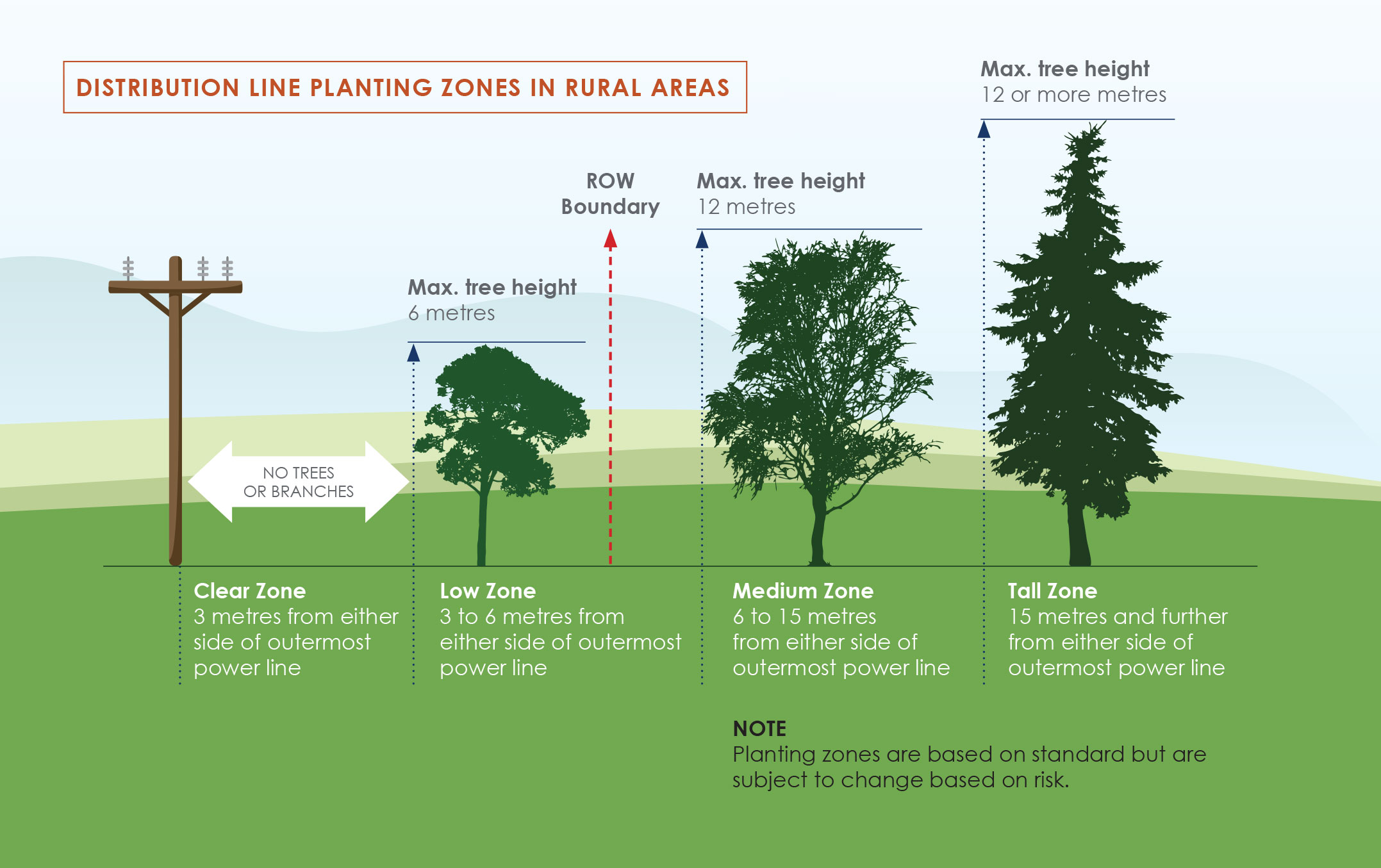
Trees are a big part of what makes our province beautiful – but when they grow too close to power lines, they can cause problems like fires, injuries, and even power outages. In fact, about 1,700 outages happen each year because of trees contacting power lines.
Our team manages vegetation near power lines through our Integrated Vegetation Management Program, and if you’re ever unsure about a tree on your property, you can request a Tree Trim Assessment – we’ll come take a look.
You can help too by planting the right tree in the right place to prevent future outages and keep your community safe.
Explore the sections below to learn more about how we manage trees and power line safety – and how you can make a difference in your own yard.
Integrated Vegetation Management
Proactively keeping trees away from power lines.
Request Tree Trimming Assessment
Responding to your concerns and requests for tree trimming.
Prevent Future Outages by Planting the Right Tree in the Right Place
Planting a tree? Great! Just make sure it’s the right tree for the right spot. Here’s how you can help:
- Know your space. Before you dig, check for underground power lines and understand any right-of-way (ROW) on your property. Visit digsafesask.com to learn more about digging safely and saskpower.com/rightofway.
- Think long-term. Consider how tall and wide your tree will grow. What looks like a safe distance now might not be in 10 years.
- Use our planting zones. The images below show safe distances for planting near both transmission and distribution lines – whether you’re in a rural or urban area.
Transmission Lines: These high-voltage lines carry power over long distances from power stations to substations. They’re usually mounted on tall towers and are less common in residential areas.
No planting is permitted within the ROW for transmission lines. Ensure 15 to 22.5 metres from either side of outermost power line are clear.

Distribution Lines: These lower voltage lines carry power from substations to homes and businesses. They’re typically found on power poles along streets and in neighbourhoods. For distribution lines, consider the tree’s height:
- Clear Zone - 3 metres from either size of outermost power line
- Low Zone - 3 to 6 metres from either side of outermost power line
- Medium Zone - 6 to 15 metres from either size of outermost power line
- Tall Zone - 15 metres and further from either side of outermost power line

What to Plant
If you’re looking for information on what to plant:
- Your local nursery can provide advice on choosing the right tree for the right space.
- You can download our Plant Smart brochure, which explains clearance distances and suggests appropriate tree species.

